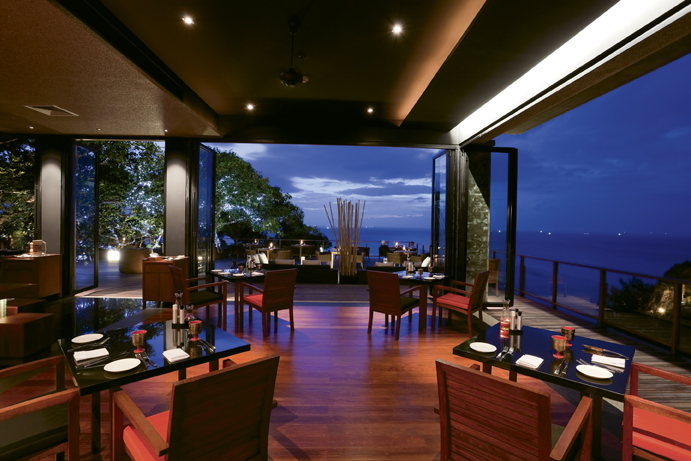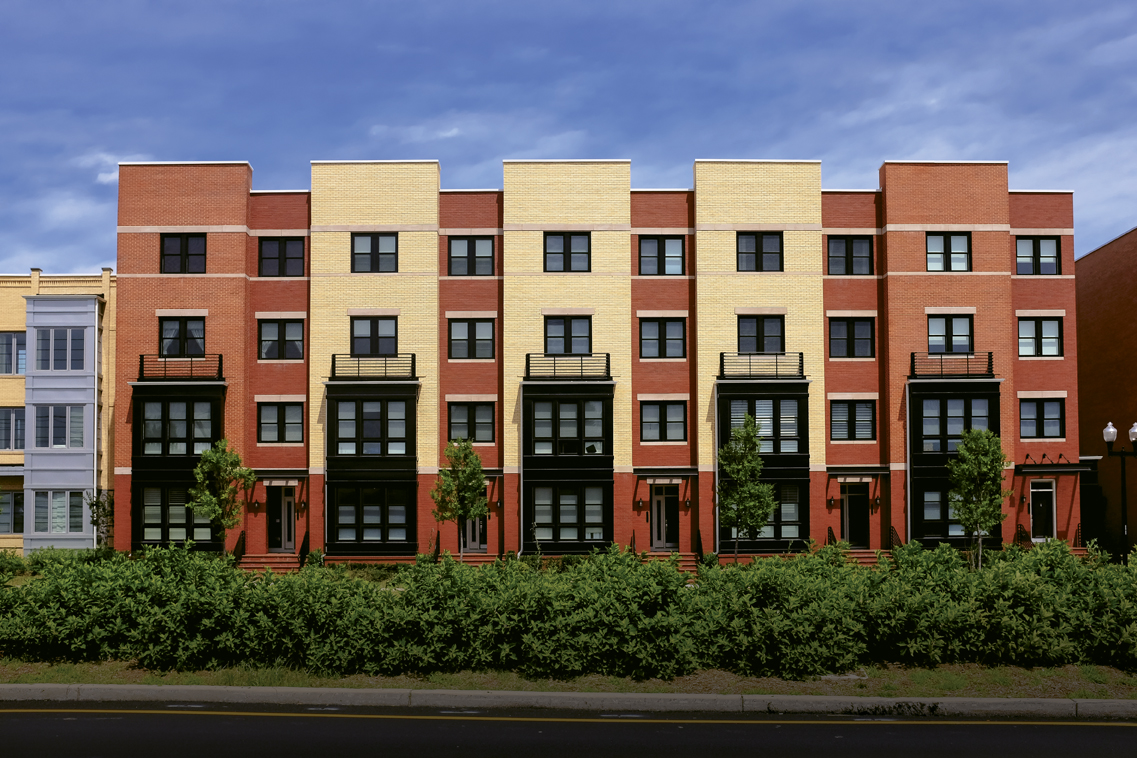Tonight’s special: An update on the restaurant market
I read a post on Facebook recently that shared an idea for couples who can never decide on a restaurant when dining out. It suggested that instead of asking “where you want to eat,” have the other person guess where you’re going to take them for dinner, as if someplace has been selected. Then go to the first place guessed. Talk about a game changer. You’re welcome and thank you to the person who originally posted it.
Whether you enjoy an extravagant dinner at a fine dining establishment, a burger and shake at a mom-and-pop diner or grab salads to go from a local deli, there’s always the chance of an accident happening. And as agents, brokers and risk managers, you can help your clients identify and manage their restaurant industry risks.
“Restaurants are unique establishments; they are required to maintain their premises in a reasonably safe condition for customers, guests and invitees,” says James Reich, regional casualty claims adjuster at Engle Martin & Associates. “Common claims in the industry today continue to be issues relating to liquor and product liability (foodborne illnesses, allergies and contamination). In addition, recent issues relating to cyber liability (data breaches, online threats and identity theft) and negligent/inadequate security (criminal acts involving bodily injury, robbery, assault/battery and rape) have also been common.”
“Restaurants can be financially devastated by a single liability-related incident. Agents and brokers involved in this niche need to emphasize this fact with their customers when discussing their insurance needs.”
—James Reich
Regional Casualty Claims Adjuster
Engle Martin & Associates
“Fall claims continue to be a common occurrence in the restaurant industry. Both employees and customers are exposed to fast-paced environments with inherent hazards both inside and outside the restaurant,” says Jim Farnan, manager of loss control, commercial lines at Arbella Insurance Group. “Contributing factors to these losses are greasy or wet floors, uneven flooring, torn carpeting, parking lot potholes and insufficient snow/ice removal.
“Newer restaurant trends may also contribute to falls in terms of the ambiance and furnishings that are now in vogue, including elevated booths, high-top tables and chairs and lower illumination levels, which to an aging population may exacerbate this hazard and have a larger impact in the future for the restaurant industry.”
While slips and falls can happen anywhere at a restaurant, other risks are predominant in the “back of the house”—the kitchen area.
“Two of the most common claims from a physical building aspect are lack of maintenance on exhaust stacks and improper upkeep of fire extinguishing systems,” says David Allen, assistant vice president of underwriting at AmTrust North America.
“Cuts, punctures, scrapes and lacerations represent 25% of restaurant workers compensation claims. Proper knife skills and material handling are key to reducing these claims, in addition to having a proper prep space to work.”
Adds Farnan: “According to the National Institute for Occupational Safety & Health, nearly half of all burn injuries at restaurants involve hot grease and more than half of all fall injuries are related to wet or greasy floors. This data shows that most workplace accidents are related to unsafe acts of employees, but this doesn’t mean that they aren’t thinking about safety when they are working but rather that they are not made aware of the safety hazards.
“Foodborne illness claims are becoming more prominent as issues come to light in the news about food recalls and restaurant patrons sickened from foodborne pathogens/allergens,” Farnan continues. “The Centers for Disease Control and Prevention estimates that each year 48 million people get sick from foodborne illness, 128,000 are hospitalized, and 3,000 die!
“Food safety is a major restaurant issue, and it should be part of a restaurant’s risk management program. Staff should know the credibility of its food sources, and have procedures for inspecting and handling food, regulating food temperatures, and sanitation and pest control. Staff should also be trained on how to handle requests from patrons who have allergies.”
Delivery
In today’s fast-paced environment, many diners are opting to bypass the sit-down restaurant experience and either grab food to go or have the meal delivered to their home or workplace. Delivery adds risk factors to the restaurant niche.
“Even if you select the best employees with the safest driving habits, distracted driving by others can create a situation that results in a work-related motor vehicle accident,” says Allen. “Protecting drivers against robbery is another element to consider.”
“Fleet safety is a huge evolving risk in restaurant safety and risk management,” says Rich Bleser, senior vice president and safety risk consulting practice leader at Marsh Risk Consulting. “If you have one company-owned delivery vehicle in your parking lot or your employees use their personal vehicles for deliveries, you have a fleet exposure. It doesn’t take 100 vehicles with tractor trailers to constitute a fleet.
“Based on a 2017 cost trends survey we conducted, the number one cause of workplace fatality is vehicle collision; from a workers comp standpoint alone, vehicle accidents are the most costly. The average cost of a collision in the United States has increased almost twofold in the past five years.”
Another growing risk is the use of third-party companies to deliver meals, as well is delivery to risky environments.
“Large lawsuits are not going to come from someone cutting him- or herself in the kitchen, but from that driver who wasn’t qualified and ran into a pedestrian.”
—Rich Bleser
Senior Vice President and Safety Risk Consulting Practice Leader
Marsh Risk Consulting
“Our concern with using a third-party vendor for delivery is liability,” says Bleser. “With food quality, you have no control once that food leaves your restaurant. Based on contracts, most of that third-party liability comes back to the restaurant.
“Look at the environments your clients’ drivers go to and do a risk assessment. Are any areas restricted for deliveries? Do you have a security program for what to do during a holdup? There are phone apps that can notify the police and the restaurant in case a situation arises. Also, investigate cash-free payments. In today’s society of credit cards and apps, I’d try to get away from having drivers carry cash.”
One way to reduce the incidence of these kinds of claims is to invest in driver monitoring.
“SuperVision provides continuous monitoring services that will notify you when there is activity on an employee’s driver’s license, or if the license is restricted,” explains Bleser. “It’s a monthly paid service and a great way to safeguard yourself.
“Run MVRs on employees who operate vehicles for your organization,” he continues. “If your employee has a collision and you find out that he or she had a DUI two months ago, or even worse was under the influence while making the delivery, you’re going to be writing a big check.
“Large lawsuits are not going to come from someone cutting him- or herself in the kitchen, but from that driver who wasn’t qualified and ran into a pedestrian. Implement a fleet safety program. Have written guidelines and qualification standards for your drivers. Define what vehicles are available for deliveries and have them inspected.”
Advice on claims
Whether vehicular, a slip and fall or a kitchen-related accident, any claim for a restaurant can be costly. Agents and brokers should be knowledgeable about the coverages available—like a server knowing the special of the day’s accompanying side dishes—and how to handle claims if they arise.
“Restaurants can be financially devastated by a single liability-related incident,” says Reich. “Agents and brokers involved in this niche need to emphasize this fact with their customers when discussing their insurance needs. They should be fully aware of the various liability coverages available and properly educate their insureds and customers.
“Emphasize the need to ‘avoid and control’ risk and any potential liability exposure. A prompt, comprehensive and thorough investigation of any potential liability claim is imperative to control risk. Getting ‘boots on the ground’ promptly at the loss site after a liability incident is essential to completing an effective claims investigation.”
Adds Farnan: “Agents and brokers should impress upon the insured that the better they maintain their restaurant, the easier it will be for them to provide a safe environment for employees and customers. The restaurant should establish a floor cleaning policy, use cleaning solutions with good grease removal and slip-resistant properties, clean up spills immediately, post wet floor signs, repair parking lot potholes, and make sure stair railings are to code and that lighting is sufficient inside and outside.”
“Fall claims continue to be a common occurrence in the restaurant industry. Both employees and customers are exposed to fast-paced environments with inherent hazards both inside and outside the restaurant.”
—Jim Farnan
Manager of Loss Control, Commercial Lines
Arbella Insurance Group
For agents who are looking to enter the restaurant niche, “Be choosy on which establishments you cover and try to find successful ones that have been open for three to five years,” says Allen. “Personally inspect the operation and make sure that the exhaust systems are up to date; question the general manager on whether the staff has recently had TIPS training (education on how to handle intoxicated patrons).
“Partnering with a carrier that understands the unique needs of restaurants is key. A carrier that allows flexibility in reporting claims and loss control services via streaming online at the convenience of the restaurant owner and staff is a major benefit to these busy business owners.”
“Agents and brokers should work with the restaurant owner and share the same vision of risk management practices,” adds Farnan. “Look at any prospective restaurant client from a patron’s point of view and provide an honest opinion.
“Help the restaurant owner prepare for employee and customer safety, food recalls, and allergen protocols, along with maintenance of the building, equipment, premises, and restaurant cleanliness. Working closely with a restaurant owner in all these areas may result in a competitive advantage, consistent food service, high food quality, and employee and customer satisfaction.”
By Christopher W. Cook
For more information:
AmTrust North America
www.amtrustgroup.com
Arbella Insurance Group
www.arbella.com
Engle Martin & Associates
www.englemartin.com
Marsh Risk Consulting
www.marsh.com
Hiring practice and safety product
According to the United States Bureau of Labor Statistics’ Job Openings and Labor Turnover Program, the 2016 annual employee turnover rate in the restaurant and accommodation sector was 73%. The constant training of new employees can be costly, but turnover and workers compensation loss rates can be decreased with assistance from employee screening services.
Integrity First (www.integrityfirsttests.com) released a case study on casual family restaurants in California, Oregon and Nevada that began using its prescreen assessment in 2014. Of the nearly 9,100 applicants, 24% were instantly disqualified based on “indications of risky behavior,” including self-admittance to theft, hostile behaviors and substance abuse, and disqualifications due to dishonesty.
High-risk behaviors by employees can manifest in many ways, including faking timecards, giving food discounts to friends and drinking on the job—and it goes without saying that risky behavior can lead to accidents and injuries.
To assist in the battle against slip and fall claims, Pennsylvania-based New Pig Corporation (www.newpig.com) provides products for leaks, drips and spills. Its Grippy Floor Mat is a good choice for restaurant kitchens and bars. The adhesive-backed mat sticks to the floor and stays securely in place, and its absorbent top captures dirt, grime and moisture.
Available in rolls, the mats are easy to configure—just cut them to the proper length and smooth out. The mat stays put without shifting or rippling. It can be swept, mopped, vacuumed, or cleaned with a floor scrubber.
The mat is tested and certified by the National Floor Safety Institute and has been proved to reduce slip and fall claims by as much as 90% when used as part of a floor safety program.






